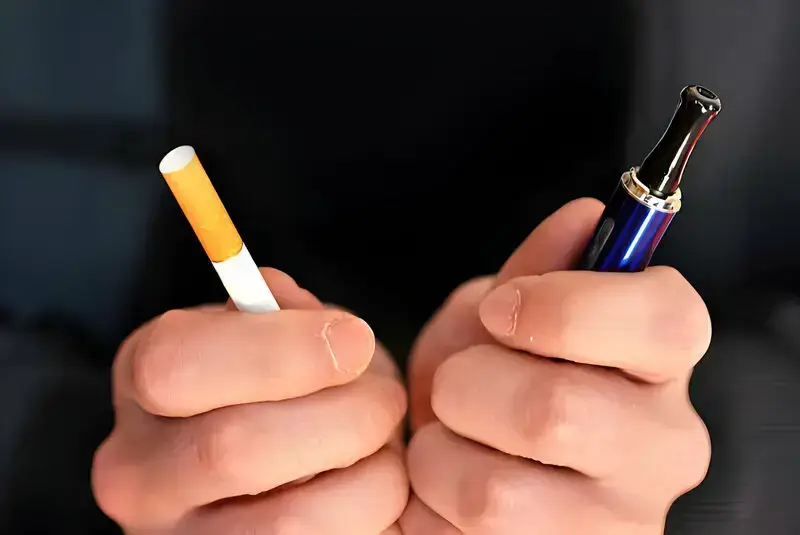Can You Use Anything Other Than E-liquids for a Vape Pen?

liquid vapeliquid vape
In recent years, vaping has become increasingly popular as an alternative to traditional smoking. One of the primary components of vaping is e-liquid, a mixture typically comprising nicotine, flavorings, and a base such as propylene glycol or vegetable glycerin. However, as vaping culture evolves, enthusiasts have begun to explore alternative substances for their vape pens. In this blog post, we’ll delve into the question: Can you use anything other than e-liquids for a vape pen?
Understanding the Basics of Vaping
Before we delve into alternatives, let’s briefly understand how vaping works. A vape pen consists of a battery, a heating element (atomizer or coil), and a cartridge or tank to hold the e-liquid. When the user activates the device, the battery sends power to the heating element, which vaporizes the e-liquid, allowing the user to inhale the vapor.
E-liquids for a vape pen are specially formulated to vaporize efficiently and provide a satisfying vaping experience. They come in a variety of flavors and nicotine strengths, catering to diverse preferences. However, some individuals may seek alternatives for various reasons, such as health concerns, flavor experimentation, or simply curiosity.
Exploring Alternative Substances
While e-liquids are the standard choice for vaping, some alternatives have gained traction among enthusiasts. Let’s explore some of these alternatives:
- CBD Oil: Cannabidiol (CBD) oil has surged in popularity due to its potential health benefits and lack of psychoactive effects. Many users prefer vaping CBD oil for its convenience and rapid onset of effects. CBD oil can be used in vape pens designed for e-liquids, providing a discreet way to consume CBD.
- Dry Herbs: Some vape pens are compatible with dry herb cartridges or chambers, allowing users to vaporize botanicals such as cannabis flower or herbal blends. These devices typically utilize conduction or convection heating to vaporize the herbs without combustion, reducing harmful byproducts associated with smoking.
- Wax and Concentrates: Vape pens designed for concentrates, such as wax or shatter, have gained popularity among cannabis enthusiasts. These substances contain high concentrations of cannabinoids and terpenes, offering potent effects with minimal odor. Vape pens designed for concentrates feature specialized chambers or coils optimized for efficient vaporization.
- Nicotine Salts: While technically still e-liquids, nicotine salts differ in chemical composition from traditional freebase nicotine e-liquids. Nicotine salts are formulated to deliver a smoother throat hit and faster nicotine absorption, making them ideal for users seeking a more satisfying vaping experience. Many pod systems and beginner-friendly vape devices utilize nicotine salt e-liquids.
- Essential Oils: Some individuals experiment with vaping essential oils for aromatherapy purposes. However, it’s essential to exercise caution when vaping essential oils, as inhaling certain oils may pose health risks. Only use high-quality, pure essential oils specifically labeled for aromatherapy or inhalation.
Safety Considerations and Risks
While exploring alternative substances for vaping, it’s crucial to prioritize safety and be aware of potential risks. Here are some important considerations:
- Device Compatibility: Not all vape pens are designed to vaporize alternative substances. Using incompatible materials can damage the device or pose safety hazards. Always use vape pens and cartridges specifically intended for the substance you’re vaping.
- Health Risks: When vaporized and inhaled, some alternative substances may carry health risks. For example, vaping oils or concentrates containing unknown additives or impurities can lead to respiratory irritation or other adverse effects. Researching and understanding the potential risks associated with any substance you intend to vape is essential.
- Legal Considerations: The legality of vaping various substances varies depending on jurisdiction and local regulations. Ensure that you comply with applicable laws and regulations regarding the possession and use of substances such as cannabis or nicotine.
- Quality and Purity: When vaping alternative substances, prioritize products from reputable manufacturers with transparent ingredient sourcing and quality control measures. Avoid products of dubious origin or questionable quality, as they may contain harmful contaminants.
Exploring Further Alternatives
Beyond the commonly discussed alternatives, there are a few more substances that some adventurous vapers have experimented with:
- Tea Leaves: Some vapers have tried using dried tea leaves in their vape pens for a unique flavor experience. However, this practice is not widespread, and there is limited information on its safety and efficacy.
- Fruit Extracts: Extracts derived from fruits such as strawberries, mangoes, or oranges have been used by some vapers to add natural fruit flavors to their vaping experience. However, it’s essential to ensure that these extracts are safe for inhalation and free from harmful additives.
- DIY E-liquids: For those who enjoy a hands-on approach, crafting homemade e-liquids using flavor concentrates, propylene glycol, and vegetable glycerin is an option. However, DIY e-liquid mixing requires careful measurement and adherence to safety guidelines to avoid potential health risks.
It’s important to approach these alternative substances with caution and conduct thorough research before trying them in your vape pen. Always prioritize safety and be mindful of potential health risks associated with inhaling non-traditional vaping materials.
Conclusion
While e-liquids remain the primary choice for vaping, enthusiasts have explored a variety of alternative substances for their vape pens. From CBD oil and dry herbs to concentrates and essential oils, there’s no shortage of options for experimentation.
However, it’s essential to prioritize safety, research potential risks, and use compatible devices and high-quality products. Responsible vaping practices are paramount whether you’re seeking new flavors, therapeutic benefits, or simply curious about alternatives. By staying informed and making informed choices, you can enjoy vaping while minimizing potential risks to your health and well-being.
For more exciting news, visit: TimesInform










